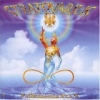Mr. Madman, Bring Me a Dream
Dream a little dream, don't ask what it means. There is tonnes of debate over the real truth behind dreams in the real world. In fiction it is an entirely different matter. In fiction, dreams represent one more layer to the story. In horror, dreams represent one more scare. Dreams, or perhaps more precisely nightmares, are chaotic things. This chaotic nature prevents some of the functions that a dream may provide to a story from being used in non-horror fiction. Chaos is unpredictable, unpredictable is scary. Chaos can be surreal, surreal is different, and like it or not, all too often different can be scary. So, as such dreams are more useful to the horror creator. Quick changes, improbable vistas, impossible creatures, and general bizarreness is the stuff of horror.
Entire horror stories can revolve around dreams, either depicting them or just looking at the resulting affect they have on the characters of the story. Of course horror film has an amazing testament to the power of dreams in the world-famous figure of the man with a dirty red and green sweater and a battered brown fedora. Freddy of course is just the tip of the horrific iceberg that is dreams in horror. Also, as with A Nightmare on Elm Street, dreams can become reality in horror. People and creatures can cross the line from dream to reality or things that can only truly be fathomed as waking dreams can be used. These are the three major styles of using dreams in horror.
In the Exorcist, discussed later in the E-rag, there is a dream sequence. The entire scene plays out in silence except for a single disquieting noise. The surreality of the scene is felt immediately. The purpose of the dream comes immediately upon its conclusion. The dream segues into the next scene and aids in distancing it in time from the scene previous to the dream. A dream in the first Hellraiser is used to exhibit that there is something special about the character having the dream. Kirsty Cotton dreams a bizarre little nightmare with fluffy white down falling like snow in a room with a bed bearing someone bleeding. She has keyed into the danger at her father's new home and the dream is bringing it to the front so that she can deal with it.
Dealing with dreams is brought to the front as well for Karen White in the Howling. After her frightening meeting with a serial killer Karen has completely blanked out what happened. Her dreams are a different matter. She relives the scene in nightmares and it has a profound effect on her life. The state it throws her into is worse than the nightmares. Meanwhile in Halloween H20 Keri Tate is plagued by dreams of the return of her brother Michael Myers, but yet they are never shown in the film. These nightmares are so disturbing to her that they have forced her to become a "functional" alcoholic. The dreams grow to such a fevered pitch around Halloween that she begins to even see Michael different places that he isn't while she is awake. The dreams affect her reality.
Nelson Wright in Flatliners finds out the hard way that dreams can be all too real. After his near death experience his dreams become so vivid that they merge with reality. Facing off against his living nightmare Nelson practically goes through the wringer. Freddy Kreuger would be proud. In the Night Warriors trilogy by Graham Masterton dreams can be just as real as the real world. Unnatural things live in dreams like they were their own personal dimensions. They affect not only the people whose dreams they inhabit but also make the jump into the real world. The greatest danger is of course facing them in the dreams, there the metaphor that dreams usual represent are a great distraction, wonderful set dressing to hide behind, or props to be used as weapons. It is the epitome of the dream as a horror creator's tool.
Dreams are just such a powerful thing to be used in our horror fiction and films. They bring many purposes to the table and are a variety of exotic fare into which we can sink our teeth. Whether they are the focus of the story or just some window dressing, dreams add new dimension to the finished product. They can add to the horror or they can act as a balance against it, sometimes even doing both as evinced by Wes Craven's Shocker. They are powerful on the reactionary level and sublime on the literary level. Any way one cuts it dreams are good horror. So dream those little dreams, we know what they mean.
© 2003 Robert G. Male
Mood: anxious.
Music: Soul of a Vagabond by Stratovarius and On With the Show by Motley Crue
 | Buy these at Amazon.ca Click Images to Buy |  |





0 Comments:
Post a Comment
<< Home